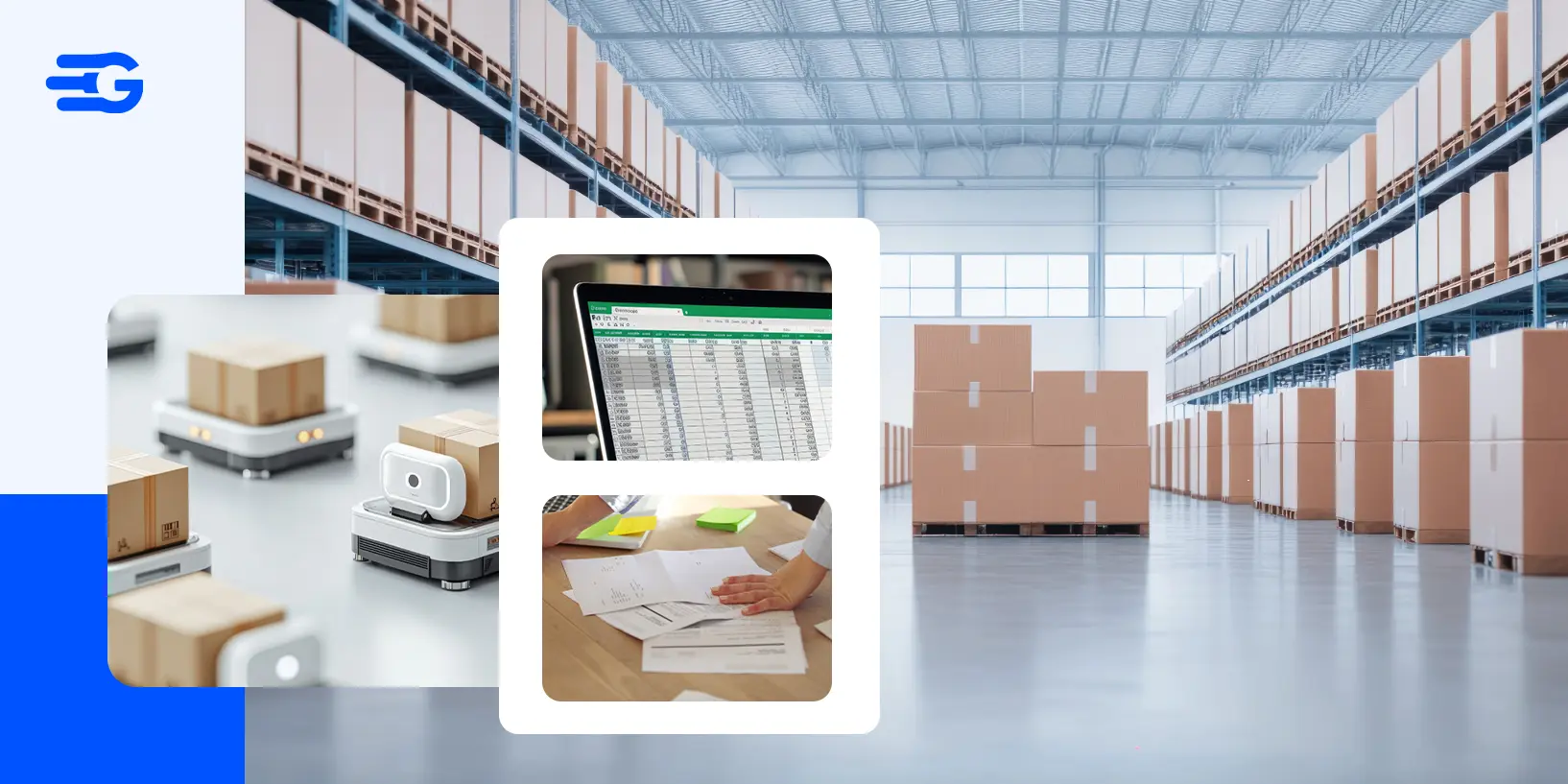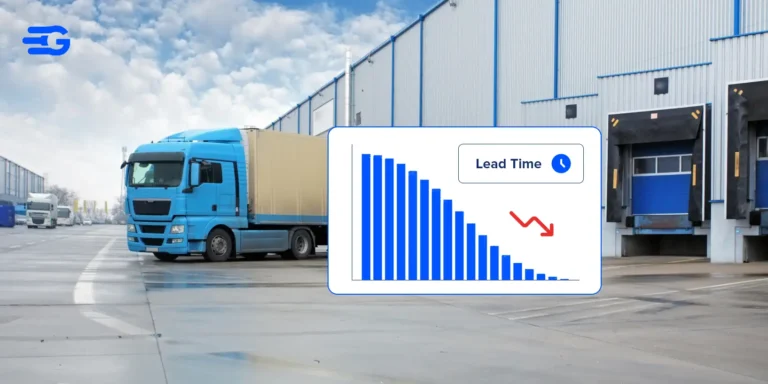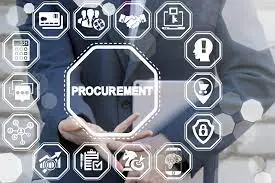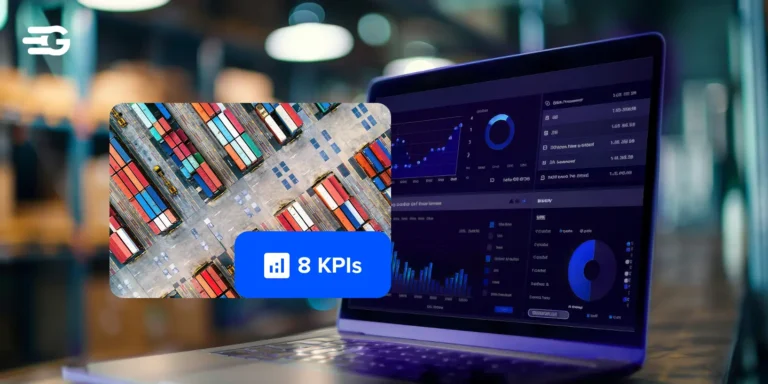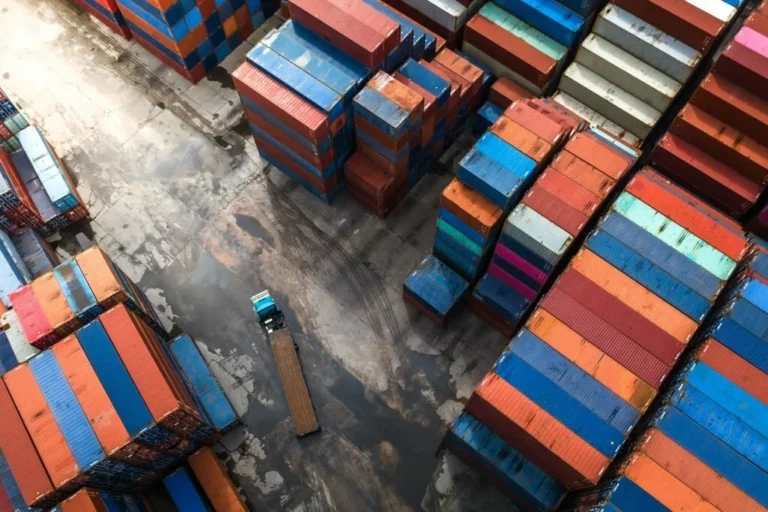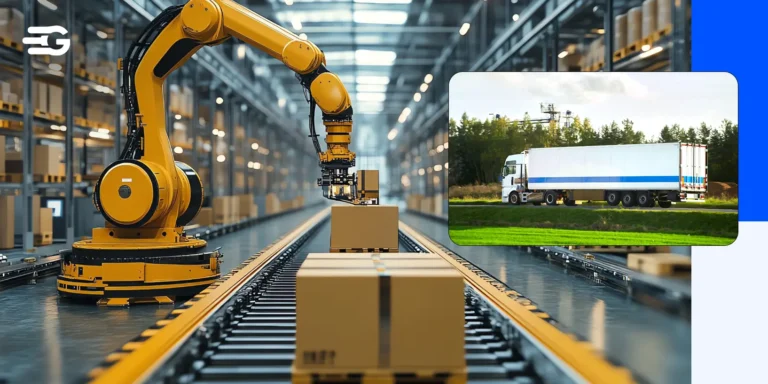Supply Chain 4.0 Uncovered: What the Digital Revolution Means for Your Business
Remember when tracking a shipment meant calling five different people and praying someone knew where your products were? Supply chains have evolved dramatically from those paper-based headaches through ERPs and internet connectivity to digital networks.
Supply Chain 4.0 connects previously siloed systems, enabling businesses to move from reactive firefighting to predictive problem-solving. This keeps inventory flowing, shipments on time, and client relationships strong through real-time visibility and smarter decision-making. Let’s dive into the practical evolution transforming how businesses deliver for their customers.
Evolution: Supply Chain 1.0 → Supply Chain 4.0
Looking back, the evolution of supply chains is almost like watching a slow transformation, step by step, each stage building on the last.
It’s fascinating, really, how much has changed, and how quickly things have moved.
SC 1.0: The Old-School Approach
In the beginning, supply chains were about as hands-on as it gets. It was paper-based, manual, and incredibly siloed. Everything from inventory tracking to order fulfillment was done on paper or with basic spreadsheets. There was no easy way to see what was happening across the board unless you were physically involved at every step. Think of it like trying to navigate a maze without any map.
SC 1.0 → SC 2.0: The ERP Shift
Then came the introduction of ERP systems, and boom, things started to get more connected. Now, you could integrate sales, production, and inventory management into one platform. It automated a lot of processes, and businesses could now see more of their operations at once.
Still, it wasn’t perfect. The flow of information was better, but it was pretty rigid. Think of it as moving from the paper trail to a digital highway, but with a few potholes along the way.
SC 2.0 → SC 3.0: The Internet-Connected Era
Now, as the internet began to spread its wings, supply chains evolved again. SC 3.0 brought the real-time visibility that changed everything. RFID tags and barcodes entered the picture, helping businesses track shipments as they moved through the system.
This shift was huge, but it still felt a bit like reacting after the fact. Businesses had the tools to track inventory and shipments, but they were mainly using the data to fix issues that had already come up.
SC 3.0 → SC 4.0: The Digital Revolution
And now, here we are with Supply Chain 4.0. The game has truly changed. We’re talking about connected systems that can talk to each other in real time, powered by things like IoT, big data, AI, and blockchain.
The best part? It’s predictive. No more reacting to disruptions. Now, systems can sense potential issues before they even happen. So, instead of waiting for a late shipment or production delay, businesses can anticipate those things, mitigate them, and adjust on the fly. It’s like the supply chain is constantly evolving and optimizing itself, without you needing to micromanage every step.
In Supply Chain 4.0, the whole supply chain becomes one big ecosystem that works together seamlessly. Information flows in all directions, not just upstream or downstream, and every part of the chain is integrated. Autonomous trucks, robots picking products, AI forecasting demand, blockchain for secure transactions.
For example, Essentra utilized GoComet’s real-time tracking and predictive analytics to streamline their global supply chain, achieving a 20% reduction in lead times and significantly boosting operational efficiency across multiple regions.
As you can see, it’s a whole new level of efficiency.
Core Technologies in Supply Chain 4.0
| Technology | What It Does | Key Benefit |
| IoT (Internet of Things) | IoT connects devices and machines to share data in real time, enabling tracking of goods at every step. | Real-time visibility into inventory and shipments, helping to minimize delays. |
| AI/ML (Artificial Intelligence / Machine Learning) | AI and machine learning forecast demand, identify anomalies, and predict potential disruptions. | Smarter decision-making through data-driven insights, improving forecasting and minimizing risks. |
| Robotics/Autonomous Vehicles | Robotics and autonomous vehicles automate tasks like picking, packing, and transporting goods. | Reduces human error, speeds up processes, and enhances operational efficiency. |
| Blockchain | Blockchain ensures secure and transparent transactions between supply chain participants. | Enhances trust by offering real-time, immutable records for every transaction. |
| Cloud & Big Data Analytics | Cloud computing allows for storing and accessing vast amounts of data, while big data analytics interprets it for actionable insights. | Scalable data storage and the ability to process large datasets for more accurate decision-making. |
These technologies don’t just exist in isolation. They come together to create a more connected, efficient, and responsive supply chain.
So, whether it’s tracking shipments in real time with IoT or optimizing your demand forecasts with AI, these tools are revolutionizing how supply chains operate.
Benefits & ROI of Supply Chain 4.0
As we saw, Supply Chain 4.0 leverages AI, IoT, automation, and predictive analytics to optimize every step of the supply chain, from forecasting to delivery. Now, let’s dive into the specific.
1. End-to-End Visibility
Supply Chain 4.0 offers real-time tracking, providing businesses with full visibility across their operations. With this transparency, businesses can respond quickly to disruptions, ensuring smoother processes and better service levels. By having a clear view of the entire supply chain, managers can make more informed decisions and act proactively, minimizing risks and delays.
2. Predictive Decision-Making
AI and machine learning are at the heart of Supply Chain 4.0’s predictive capabilities. These technologies help businesses forecast demand with greater accuracy and spot potential disruptions before they occur.
According to McKinsey, predictive analytics can reduce forecasting errors by 30 to 50%, enabling companies to better align their resources and operations with actual demand, avoiding costly mistakes and delays.
3. Sustainability Gains
With better demand forecasting and optimized routes, businesses can reduce waste and improve sustainability. The precision offered by Supply Chain 4.0 reduces overproduction, unnecessary transportation, and excess inventory, all of which contribute to lowering a company’s carbon footprint.
These benefits directly translate into a tangible business impact over time. By improving decision-making, automating processes, and reducing errors, businesses lower costs, improve service levels, and increase revenue from more satisfied customers.
4. Operational Efficiency
Automation through robotics and AI enhances operational efficiency by reducing manual work and speeding up processes. Tasks that once took hours, like sorting inventory, packing, or processing orders, can now be completed in a fraction of the time. McKinsey notes that automation can reduce operational costs by up to 30%, boosting productivity while cutting down on human error.
5. Enhanced Resilience
Supply Chain 4.0 improves the resilience of businesses by enabling them to quickly adapt to disruptions. With real-time data and predictive insights, businesses can make adjustments in real-time, preventing or mitigating the impact of unexpected events. This allows for a more agile and responsive supply chain.
Challenges & Quick-Start Strategies
When implementing Supply Chain 4.0, it’s essential to address key challenges of the transition. Below are some of key aspects where you can face challenges and how to handle them effectively:
| Aspect | Challenge | Quick-Start Strategy |
| Integration | Integrating new technologies with existing systems can be complex. | Start with a small pilot to test integration and ensure smooth data flow. |
| Upskill | Ensuring your team is prepared to use new tools and systems effectively. | Focus on targeted training for key team members before full-scale adoption. |
| Scalability | Expanding digital tools across the supply chain without overextending resources. | Pilot in one area first, then expand based on success and insights. |
| Security | Protecting sensitive data and ensuring compliance in a more connected environment. | Implement robust security protocols and encryption from day one. |
GoComet Suite for Supply Chain 4.0
The GoComet Suite is designed to make your supply chain smoother, faster, and smarter.
Here’s a closer look at how GoComet makes that happen:
- GoTrack: Aggregates data from multiple sources to give you real-time, consolidated tracking of your shipments. No more guesswork on where things stand.
- Predictive ETA: AI-driven forecasts that predict delivery times accurately, so you can plan ahead and address delays before they happen.
- Exception Management: Automated alerts for disruptions, along with actionable workflows, so you can respond to issues immediately without the scramble.
- Control Tower: A centralized hub for real-time collaboration with your partners, ensuring everyone is aligned and issues are resolved faster.
- Analytics & Reporting: Custom dashboards to track KPIs and gain insights, enabling smarter, data-driven decisions to boost efficiency.
It’s all about connecting the dots and ensuring that your operations run as efficiently as possible.
Closing Thoughts
Supply Chain 4.0 brings real, practical changes to how businesses manage their operations. By integrating the right technologies, you can improve efficiency, reduce risks, and better respond to challenges as they arise. It’s about making smarter decisions with the tools that help you stay on track and ahead.
If you’re considering how to apply these solutions to your own supply chain, taking a closer look at GoComet could be a helpful next step. Book a short demo here. You’ll see firsthand how these features work in real-time and can start thinking about how they fit into your operations.
